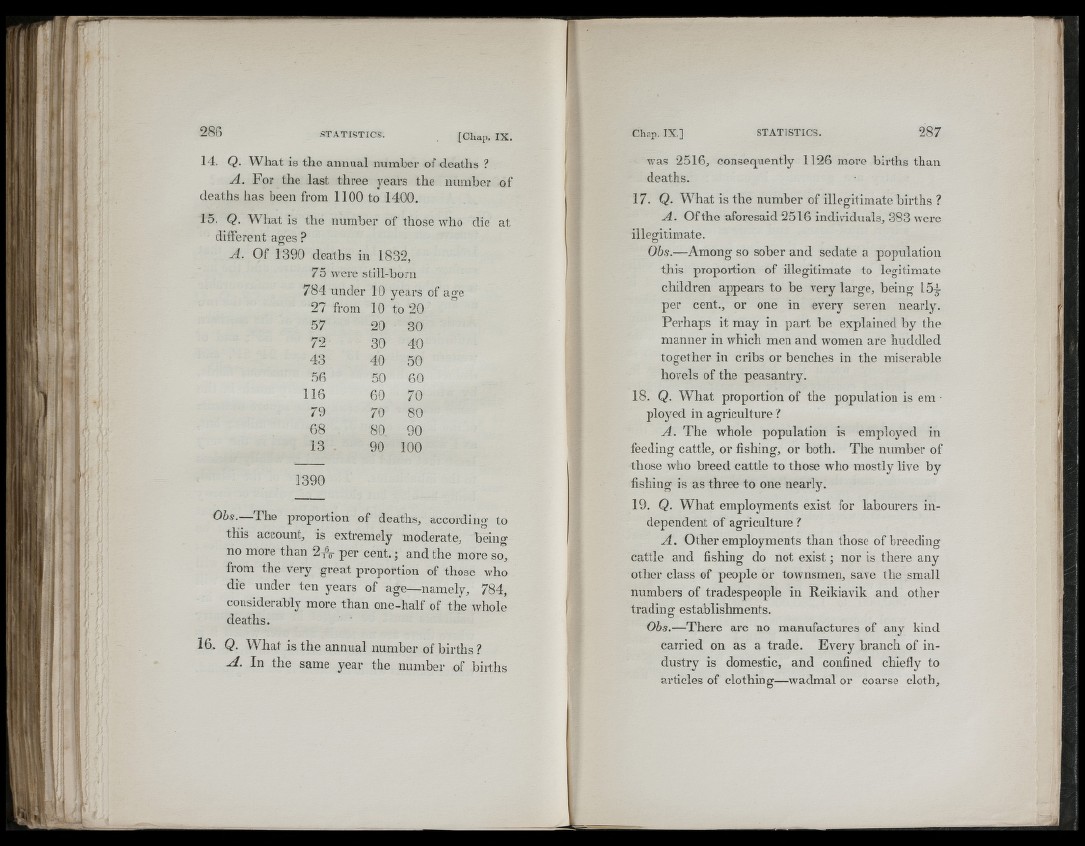
14. Q. What is the annual number of deaths ?
A . For the last three years the number of
deaths has been from 1100 to 1400.
15. Q. What is the number of those who die at
different ages ?
A. Of 1390 deaths in 1832,
75 were still-born
784 under 10 years of age
27 from 10 to 20
57
20
30
72
30
40
43
40
50
56
50
60
116
60
70
79
70
80
68
80,
90
13
90
100
1390
Obs.—The proportion of deaths, according to
this account, is extremely moderate, being
no more than 2xo- per cent.; and the more so,
from the very great proportion of those who
die under ten years of age—namely, 784,
considerably more than one-half of the whole
deaths.
16. Q. What is the annual number of births?
H. In the same year the number of births
was 2516, consequently 1126 more births than
deaths.
17. Q. What is the number of illegitimate births ?
A . Of the aforesaid 2516 individuals, 383 ivere
illegitimate.
Obs.—Among so sober and sedate a population
this proportion of illegitimate to legitimate
children appears to be very large, being 15^
per cent., or one in every seven nearly.
Perhaps it may in part be explained by the
manner in which men and women are huddled
together in cribs or benche.s in the miserable
hovels of the peasantry.
18. Q. What proportion of the population is em
ployed in agriculture?
A . The whole population is employed in
feeding cattle, or fishing, or both. The number of
those who breed cattle to those who mostly live by
fishing is as three to one nearly.
19. Q. What employments exist for labourers independent
of agriculture ?
A . Other employments than those of breeding
cattle and fishing do not ex ist; nor is there any
other class of people or townsmen, save the small
numbers of tradespeople in Reikiavik and other
trading establishments.
Obs.—There are no manufactures of any kind
carried on as a trade. Every branch of industry
is domestic, and confined chiefiy to
articles of clothing—wadmal or coarse cloth.
•m.
4